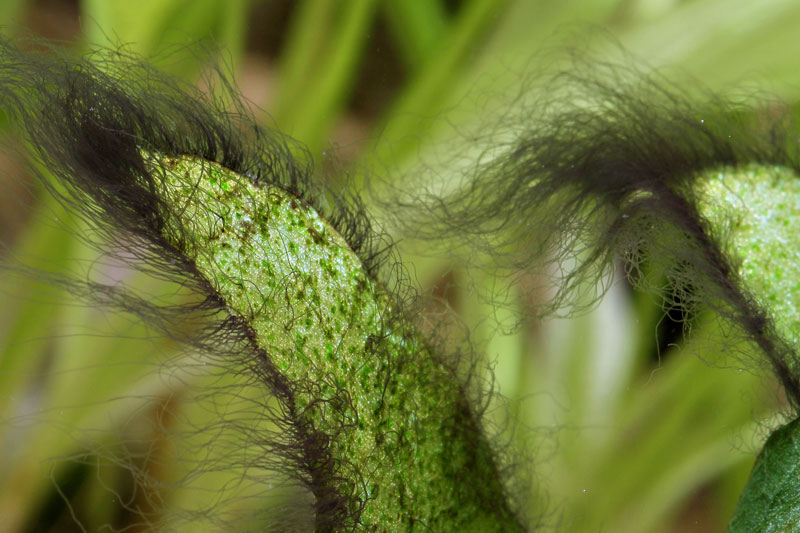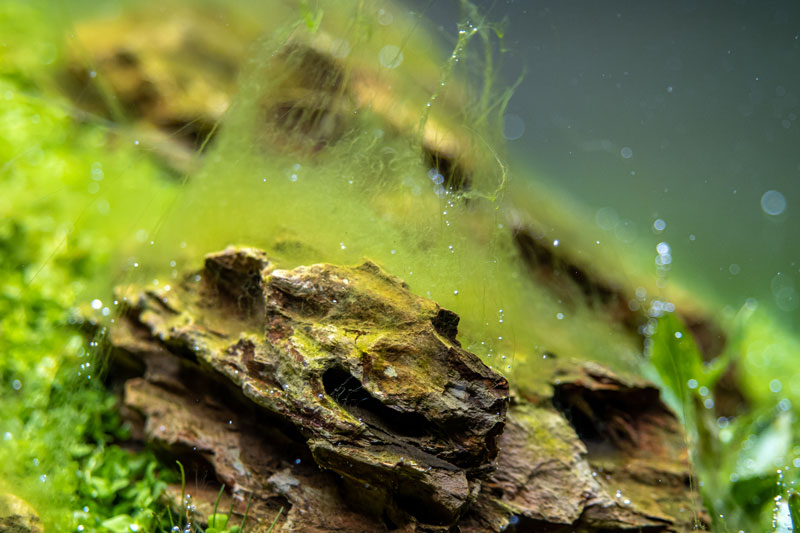of algae

Macroalgae and microalgae can be found everywhere on our planet. Most of the species are marine algae and freshwater algae. There are also specialists such as air algae, soil algae, and even snow algae.
The variety of algae species is unknown. According to different estimates by authors, the number ranges from 70,000 to a million species. Within groups of algae there is an incredible spectrum of different genera and species. In our aquariums you can describe four important groups of algae that everyone has probably come across in their glassboxes.

Blue-green algae
Blue-green algae, aka BGA or Cyanobacteria, are often found in aquaria. They are the most ancient algae in fact, they aren‘t algae at all. They are classifiedas bacteria, given the fact that they lack a true cell nucleus. BGA grow fast, forming a blue-green layer on the substrate, rocks and driftwood.
In the case of a BGA infestation, a 5-6 day blackout helps. No light may enter the aquarium during this time: Use a piece of cloth or cardboard to shade it off completely. After that, change 50% of the water three days in a row. Blue-green algae can produce poisons, which make these large water changes so important!

Green algae
Green algae are quite comparable to higher plants when you look at their metabolism and structure. Small green spots on the glass and leaves of slow-growing plants like Anubias are almost certainly green algae. Some take the form of long filamentous structures or algae that grow in cushions.

Red algae
There are two highly unpopular kinds of red algae. Both respond very well to the anti-algal measures we provide in the text. These are beard algae and staghorn algae, which both prefer an environment with little CO2. They prefer growing in places with a stronger current.
If more Co2 is present in the water, red algae will incorporate less lime into their cellular structures, and algae eaters will more easily consume them.

Diatoms
Diatoms form a brown layer on rocks, driftwood and other decorative materials. Fast-growing plants and the rasping mouths of snails or Otocinclus catfish reduce diatoms efficiently. Usually these algae appear during the cycling phase of a tank and disappear all by themselves after a few weeks.
_____________
Follow the steps on the next page to keep algae at bay:

How to prevent algae?